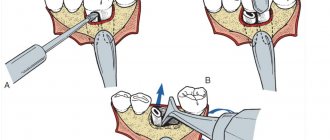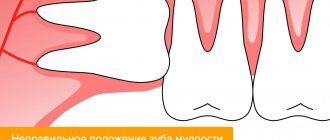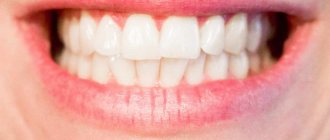Visiting the dentist rarely brings joyful emotions. Many modern dentistry clinics offer dental treatment or tooth extraction using general anesthesia (general anesthesia). What should you consider when considering this dental care option?
Fear of dentists is inherent in every patient, but in some cases the situation becomes uncontrollable and it is simply impossible to remove or treat a tooth in the usual way.
Dental treatment during sleep allows you to effectively carry out most manipulations in the mouth. But it is important to remember the existing limitations, taking into account not only the positive, but also the negative aspects of such therapy.
So is it possible to treat teeth under general anesthesia, using different types of general anesthesia?
Under general anesthesia, a type of anesthesia is offered that helps to completely eliminate the patient’s sensitivity and activity and put him into a medicated sleep.
However, most dentists prefer to carry out sedative therapy before local anesthesia, since it does not require complete exclusion of consciousness, and the patient can respond to the doctor’s voice, calmly perceive manipulations, remain in a relaxed state, while the fear of the appointment has already been eliminated.
The superficial effect of local analgesia eliminates sensation in the oral cavity, but does not allow the patient to relax physically and mentally. If necessary, the situation can be improved by combining sedatives, plunging the patient into a superficial sleeping state; if necessary, the patient can easily emerge from this state.
What types of pain relief are used during tooth extraction?
A classic example of an archaic tooth extraction without any anesthesia is an episode from Chekhov’s story “Surgery.” In modern dentistry, such outright torture does not happen, and tooth extraction without anesthesia is not carried out under any circumstances. If it is necessary to remove 1 - 2 teeth in one visit, the operation is carried out mainly under local anesthesia. However, there are indications for tooth extraction under general anesthesia.
In medicine, the term “general anesthesia” means a state of inhibition of the central nervous system with a temporary immersion of the patient into sleep of varying degrees of depth and loss of pain sensitivity. This reaction of the body is artificially induced using safe anesthetic medications, and it lasts from 30 minutes to 3 hours, depending on the required volume of surgical intervention. For example, removing 4 wisdom teeth under general anesthesia will require a significant amount of time.
Simultaneous removal of 2 or 4 wisdom teeth
Extracting two eights at once from one side is a productive tactic. Two units are removed at once, and restoration and regeneration takes place once. Unpleasant sensations and discomfort go away in one go. Restoration of the oral cavity is not complicated in any way by a one-time removal. An effective approach that we mainly advise the patient.
Extracting all 4 wisdom teeth at once is extremely rare. It can only be recommended if the patient is very afraid and under general anesthesia. Regeneration is very difficult, consuming food is much more difficult.
Advantages of tooth extraction under general anesthesia
- Anesthesia slows down the body's reactions, due to which the pain is completely relieved. Therefore, all the dentist’s procedures for removing teeth will be completely painless for you.
- Many sensitive patients put off visiting a surgeon until dangerous complications develop simply because they are afraid of the mere sight of surgical instruments. If teeth are removed under general anesthesia, you will not see how the process will occur, but will only wake up when it is over.
- Even for a psychologically stable person, tooth extraction is a stressful situation that negatively affects the body. For example, patients often experience increased blood pressure during this procedure. However, if the operation is performed under general anesthesia, your nerves will not be damaged.
- While the anesthesia is in effect, the dentist will remove the necessary teeth and perform the necessary manipulations, which could take several visits. He will perform all actions carefully and efficiently, which will reduce the risk of complications.
Interesting fact!
According to data from various media sources, at least 2% of adults and 6 - 8% of children, for various reasons, do not have the opportunity to undergo routine tooth extraction using local anesthesia.
Only the best for you
Some patients believe that it is better to endure the pain and save on anesthesia.
In any case, it is everyone’s choice, but in some cases it is simply impossible to do without the use of medicated sleep. At the Center for Modern Dentistry, 30 minutes of dental anesthesia costs 6,600 rubles, one hour - 13,200 rubles. The clinic’s specialists are always ready to accommodate our patients and try to complete all the difficult work within the allotted time.
You can learn about the cost of teeth removal services under anesthesia during a consultation with a specialist. Just call +7 (495) 967-74-77 and make an appointment.
We are grateful that you contacted us. Experienced doctors at the Center for Modern Dentistry will take care of your health and comfort. For tooth extraction under anesthesia or sedation, technologies that will be the best solution for you. While you are resting, we perform our work efficiently and painlessly.
Types of anesthesia for tooth extraction and methods of its behavior
Based on the depth of anesthesia, anesthesia is divided into the following types:
- surface;
- easy;
- full;
- super deep.
For dental treatment under anesthesia, only superficial and light anesthesia is used in dentistry. While the last two types are used for complex operations, for example, for maxillofacial injuries.
Anesthesia is carried out in two main ways:
- inhalation - you inhale sprayed particles of the drug through a special mask;
- intravenously - using a regular injection.
High-quality anesthetic drugs promote restful drug-induced sleep and recovery from it without any complications. Modern anesthetic medications are highly safe and suitable even for patients with allergies. They do not cause side effects or addiction and are easily eliminated from the body.
Prices for wisdom teeth removal at Implantmaster
Tooth extraction is simple:
- X-ray images
- Anesthesia
- Removal of a tooth
- Applying and removing sutures
- Postoperative examinations
Price : from 3,000 ₽ to 7,800 ₽
Tooth extraction is complicated
| from 10,000 to 20,00 ₽ |
The price of a technically complex atraumatic removal of one wisdom tooth in Moscow dentistry reaches up to 20 thousand rubles. and higher. The cost of the procedure itself may be added to the price of artificial bone used during bone grafting to minimize the risk of thinning of the jaw bone in the segment after removal.
Many doctors simply apply suture material to the wound, lowering the cost of the extraction procedure to 10 thousand rubles.
Author:
Indications and contraindications
The use of anesthesia in each specific case must have serious medical reasons, so it is used infrequently. In addition, the cost of tooth extraction under general anesthesia is quite high. If you are simply afraid of surgery, but you only need to remove one front tooth, then in this case it is advisable to use light sedatives and carry out tooth extraction under local anesthesia. If the surgeon’s task is much more complex and the volume of work is large, then general anesthesia is appropriate.
Indications
The following main indications exist for the use of general anesthesia during tooth extraction:
- allergy to local anesthetics;
- panic fear of treatment;
- increased blood pressure (hypertension) due to stress;
- a gag reflex in the patient, which prevents the doctor from performing the operation;
- large volume of manipulations;
- inability of a patient with disabilities to sit in the dental chair.
Contraindications
Speaking about contraindications to tooth extraction under general anesthesia, you should be guided by the list of factors presented below that may cause refusal of this procedure:
- exacerbation of chronic pathologies;
- diabetes mellitus in the stage of decompensation;
- acute heart failure;
- period up to six months after myocardial infarction;
- heart defects;
- infectious diseases;
- anemia;
- epilepsy;
- pathologies of the respiratory system.
Complications after wisdom tooth removal
Sometimes the patient may develop complications after the intervention. These consequences are:
- a slight increase in temperature for a short time (you can take an antipyretic);
- accumulation of pus in the wound;
- inflammation of the gums;
- bleeding that does not stop for a long time;
- swelling that lasts for several days;
- Difficulty cleaning the mouth.
If such signs are detected, you should immediately consult a doctor and take a course of antibiotics. If unpleasant symptoms persist for a long time, it is necessary to revise the hole.
The natural consequences of removing eights are considered to be slight swelling, which subsides by the next day, as well as temporary discomfort. Regardless of the type of anesthesia, the patient will continue to experience discomfort after the intervention. To avoid complications, it is necessary to carry out high-quality cleaning of the entire mouth.
When is tooth extraction required under anesthesia?
Complex tooth root removal
The lateral (chewing) teeth have a complex root system. Sometimes it takes quite a long time to extract them. Removing a tooth root under anesthesia allows the surgeon to carry out a large amount of work during one patient visit.
Removal of impacted wisdom tooth
One of the most difficult operations is the removal of a wisdom tooth under general anesthesia. The roots of “eights” are often irregular, intertwined with each other, and go under the adjacent tooth. Resection of unerupted (impacted) wisdom teeth is especially difficult. They have to be removed for a long time and carefully through incisions in the gums. That is why 8 teeth are removed under general anesthesia.
Removal of several molars
When it is necessary to remove several molars during one visit to the dentist, it is also advisable to use general anesthesia. Often, the doctor performs additional manipulations of gum plastic surgery with bone grafting if subsequent installation of implants is planned.
Why do children have their wisdom teeth removed?
The eighth molars, especially those located in the lower row, are quite often pathological, and already at the rudimentary stage they may have growth and development disorders.
Extraction of wisdom teeth in children occurs according to the indications of an orthodontist, who identifies pathologies of the figure eight. The most common deviations of the rudiments of wisdom teeth in children and adolescents are considered to be: the location of the molar outside the dentition, horizontal or inclined growth position. Even before teething, the child may already experience disturbances in the form of displacement of the dentition or adjacent teeth. If a tooth has erupted, indications for its removal may include caries, pulpitis/periodontitis, pinched nerve (trigeminal), root cyst, pathological branching of the root system.
The main indication for extraction of eighth molars is the upcoming treatment of malocclusion due to misaligned teeth or a narrow jaw. A wisdom tooth may have a concomitant pathological effect, or the orthodontist recommends extraction as a preventive measure for repeated malocclusion when deviations in the formation of the rudiment are detected.
Stages of tooth extraction under general anesthesia
Preparation
Questions about the choice of anesthetic and the method of its administration are resolved individually for each patient. To do this, the anesthesiologist will collect an anamnesis, inquire about the patient’s chronic diseases and refer him to diagnostic procedures (usually a blood test and an ECG). It is also necessary to consult with a neurologist, therapist and otolaryngologist in order to identify contraindications to the use of general anesthesia.
Operation
Literally one minute after the administration of the anesthetic by inhalation or intravenous route, the patient feels drowsy and gradually falls asleep. Within five minutes, his breathing stabilizes and his muscles relax. During a tooth extraction operation under general anesthesia, a qualified anesthesiologist is constantly with the patient, monitoring his vital signs: pulse, blood pressure, body temperature, skin tone, blood circulation and ventilation.
Coming out of anesthesia
The doctor calculates the dose of the anesthetic so that its effect ends 10 - 20 minutes after completion of all manipulations. The patient gradually wakes up, and after 60 - 90 minutes his state of health is completely stabilized. After this, he can go home, but for this he will need an accompanying person. In addition, after tooth extraction under general anesthesia, you should never drive!
When preparing for tooth extraction under anesthesia, be sure to inform your doctor about all medications you are currently taking. Six hours before surgery you should stop eating and stop smoking. Stop drinking any drinks, including plain water, at least four hours before surgery.
Get a consultation
We will answer all your questions before visiting the clinic!
+7
Online registration
Stage 3: Surgery to remove wisdom teeth
Surgical intervention to extract a wisdom tooth takes place in compliance with the following steps:
- Visual and instrumental examination of the condition of the oral cavity.
- Rg – pictures.
- The presence of allergic reactions is detected and a suitable anesthetic is selected.
- Concomitant diseases are analyzed, due to which the removal will be in question.
- An anesthetic drug is injected into the gums around the tooth.
- While the anesthetic begins to act, the surgeon selects the necessary instruments (for the upper or lower jaw).
- Performing unit extraction.
If after extraction a deep and large wound remains, then suture material is applied.
Simple wisdom tooth removal
Implantmaster specialists perform even the simplest removal using an atraumatic technique, using forceps for the upper or lower jaw. This procedure is performed without making any incisions in the gums, dividing the roots, or drilling out of the bone. This atraumatic operation is applicable for fully formed wisdom teeth with straight roots or one fused root.
- Application of local anesthesia;
- Application and fixation of forceps;
- Rocking and tooth extraction;
- Removing broken pieces from the hole;
- formation of a blood clot to accelerate regeneration.
The procedure takes from 15 minutes to half an hour. The maxillofacial surgeon gives recommendations for caring for the oral cavity after wisdom tooth removal, which must be followed.
Complex wisdom tooth removal
Before carrying out a complex extraction of a wisdom tooth, you should carefully carry out preparatory measures - Rg-images, which help determine the size and depth of the roots; a complete history taking. The doctor needs to understand the clinical situation as much as possible so that the extraction manipulations go clearly and according to plan. When an inflammatory process is detected around the unit or at the root apex, antibacterial therapy is prescribed before extraction.
At Implantmaster, all surgical procedures are performed under the influence of local anesthetics. Our specialists perform atraumatic extraction of all units using an ultrasonic device.
A dental surgeon uses a periotome to peel the gum away from the tooth. To maintain the integrity of the bone interroot septum, the doctor divides the roots. Using a technological piezo scalpel - the VarioSurg LED ultrasound system for surgical purposes - the roots with the coronal part are separated and segmented. The extraction is as safe and painless as possible. This technique allows you to minimize the risks of unpleasant consequences for any operations. After completing the wisdom tooth removal procedure, the doctor will definitely inform you what not to do, how to protect yourself and speed up healing.
Sedation in dentistry for children and adults –
As we said above, sedation is the general strong calming of the patient, in which he is on the verge of sleep. During sedation, the patient is able to perform simple actions at the request of the doctor (for example, opening his mouth) - although patients do not remember any of this afterwards. The big advantage is that sedation has no contraindications and is much easier to tolerate.
Dental extraction and treatment under sedation is much safer than under general anesthesia. For example, sedation can be performed on a patient every day (without harm to health), and there is no mortality from it. The patient wakes up just a few minutes after the end of the drug administration, and all patients immediately orient themselves well in space and move normally. Sedation is carried out by inhalation or intravenous route, or a combination of both.
The inhalation route of administration is not very convenient for interventions in the oral cavity. The most inexpensive option for inhalational sedation is the use of nitrous oxide; the drug Sevoran (sevoflurane) is much more effective. But if the latter already immediately has both a sedative and analgesic effect, then in any case, either local anesthesia or a narcotic analgesic will have to be added to nitrous oxide. The most modern version of sedation is intravenous sedation with the drugs Midazolam and Propofol (diprivan).
Drugs for intravenous sedation –
Of all the possible drugs for intravenous sedation, Midazolam and Propofol are the most modern and safe. Their administration causes depression of consciousness within 20-40 seconds. If a patient is planning to have teeth filled under sedation, then very often they are premedicated with a diphenhydramine solution (this is especially important in children). The latter contributes to a sharp decrease in salivation, which is very important for high-quality dental fillings.
- Midazolam belongs to the class of benzodiazepines and is preferable for short-term interventions.
This drug has several benefits. Firstly, it is the shortest-acting benzodiazepine, which allows the anesthesiologist to make sedation as manageable as possible. The anesthesiologist will continually add small amounts of the drug during the treatment or tooth extraction process. The second advantage is that patients during shallow sedation with midazolam are even able to communicate with the doctor during treatment and follow his commands, but after the end of treatment they do not remember at all that the treatment was carried out. Those. the patient does not remember anything from the moment of the intravenous injection until he comes out of sedation. Disadvantage – it belongs to drugs from “list B”, and therefore requires additional permits.
- Propofol (Diprivan) is a hypnotic that is intended for intravenous administration. It is a fairly expensive drug, so it is not used very often in Russia (although it is one of the most popular drugs in the world). Awakening from propofol sedation occurs more quickly and with fewer residual reactions than most other drugs.
Important: It should be noted that sedation and analgesia are not the same thing. Sedation involves turning off fear and anxiety, and at the same time the patient will be conscious (on the verge of sleep). Moreover, if a painful intervention is planned, then the patient under classical sedation with nitrous oxide, propofol or midazolam will feel pain. Therefore, in their pure form, these drugs are used only for those interventions that are not capable of causing pain. In other cases, analgesics are added to them.
Therefore, it is worth distinguishing between “conventional sedation” and “sedation with analgesia.” The first allows you to cope only with stress and fear of dental intervention, the second is also aimed at pain relief. To achieve pain relief, intravenous sedation drugs are combined, for example, with ketamine. Or you can immediately use an inhalation drug such as Sevoran (Sevoflurane), which has both a sedative and analgesic effect (24stoma.ru).
General anesthesia and sedation in dentistry for children - reviews
Dental treatment under sedation in children is possible at any age.
The anesthesiologist selects a drug for sedation based on the child’s age, physical activity, and level of aggressiveness. When only sedation (without pain relief) is required, it is better to use Propofol in children of any age. If sedation with anesthesia is required, use a combination of propofol with ketamine, or the inhalation anesthesia drug Sevoran. Separately, we note that inhalation anesthesia with Sevoran is not used for infants, and therefore either pure Propofol or a combination of propofol with ketamine will be indicated. Sedation in dentistry for children has the most positive reviews from parents, allowing them to neutralize the child’s fear of intervention, as well as sanitize the entire oral cavity - most often in just 1 visit to the dentist. However, if long-term interventions are necessary, preference will be given to general anesthesia, or sometimes a combination of both.
Sedation in dentistry in children: video (video 1 – child’s behavior during shallow sedation and recovery from it; video 2 – intravenous sedation).
Will there be pain during and after the procedure?
No, during the operation you will not feel any discomfort, because you are relaxed, and we additionally applied local anesthesia, which numbs the surgical area.
After the operation there will be slight discomfort - you will feel weak, perhaps slightly dizzy. But there will be no severe pain, even after removing all the teeth and installing a large number of implants. After the anesthesia wears off, the pain may increase, but your doctor will prescribe pain medications for you to take if necessary. These sensations will not be associated with the use of xenon, but with tissue injury in general.
Comfortable treatment without pain! We carry out thorough diagnostics, select medications and dosages strictly individually. It's safe here!
Enroll now











